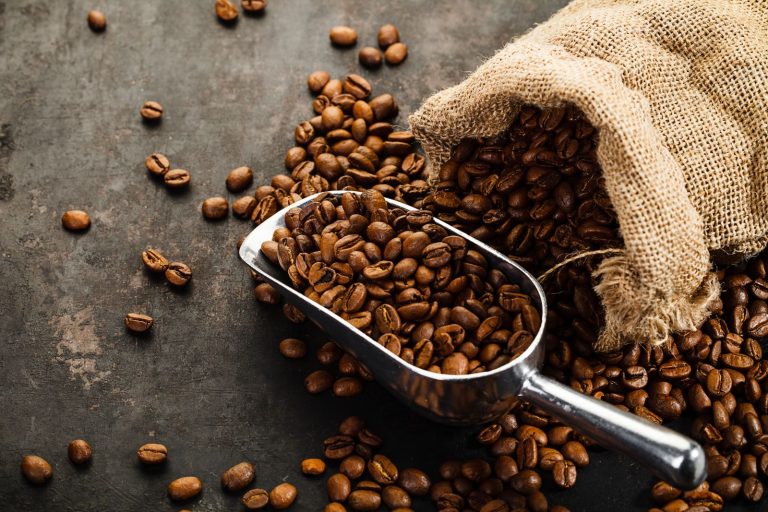Key Takeaways
- Coffee futures saw an uptick, with December arabica up 0.72% and January robusta up 3.25%.
- Reduced Brazilian imports due to a 50% tariff are shrinking ICE coffee inventories, supporting arabica prices.
- Market sentiment shifted on Tuesday due to anticipated tariff removal and recent rainfall in Brazil.
- Dry conditions in Brazil and potential La Niña impacts had previously driven up arabica prices.
- Increased robusta supplies from Vietnam and higher global coffee exports are pressuring robusta prices downward.
Coffee Market Dynamics: Price Movements and Inventory Shifts
December arabica coffee futures (KCZ25) closed at a higher mark on Wednesday, adding 2.80 points, or 0.72%. Concurrently, January ICE robusta coffee futures (RMF26) experienced a substantial increase, concluding the session up 145 points, or 3.25%.
The upward momentum in coffee prices is significantly supported by dwindling ICE coffee inventories. The implementation of a 50% tariff on US imports from Brazil has led to a marked reduction in these stockpiles. As of Wednesday, ICE-monitored arabica inventories have fallen to their lowest point in 1.5 years, standing at 446,475 bags. Similarly, ICE robusta coffee inventories have reached a 3.25-month low, totaling 6,111 lots.
💡 American buyers are actively voiding new contracts for Brazilian coffee due to the substantial 50% tariff on imports, which is effectively tightening US supplies. Brazil accounts for approximately one-third of America’s unroasted coffee imports, highlighting the impact of this trade friction.
Trade Policy and Weather’s Dual Impact on Coffee Prices
Earlier in the trading week, on Tuesday, coffee prices saw a retreat, dipping to two-week lows. This price adjustment was partly influenced by weather forecasts indicating rain in key Brazilian coffee-producing regions, potentially alleviating the dry conditions experienced the prior week. Data from Somar Meteorologia revealed that Brazil’s primary arabica coffee-producing state, Minas Gerais, received minimal rainfall (0.3 mm) during the week ending October 24, representing only 1% of the historical average.
📊 Speculation surrounding the potential lifting of the 50% tariff on Brazilian coffee by the US also played a role in the day’s price fluctuations. Following a meeting between Brazil’s President Luiz Inacio Lula da Silva and President Trump, there were hints of a potentially definitive resolution to US-Brazil trade issues, suggesting a possible agreement could be imminent.
Last Thursday, arabica coffee prices surged to an 8.5-month high for nearest futures. This sharp rise was fueled by concerns that prolonged dry spells in Brazil during the crucial flowering period for coffee trees could negatively impact the 2026/27 coffee crop. The Bloomberg Brazil Weather Analysis indicated that coffee-producing areas in Brazil have been experiencing severe drought, with Minas Gerais receiving only about 70% of its average rainfall over the preceding month.
⚡ Coffee prices also found support following an announcement by the National Oceanic and Atmospheric Administration (NOAA) on September 16. NOAA increased the likelihood of a La Niña weather system developing in the southern hemisphere between October and December to 71%. Such a system could bring prolonged dry weather to Brazil, potentially harming the 2026/27 coffee crop. Brazil is recognized as the world’s largest producer of arabica coffee.
Robusta Supply Dynamics and Global Export Trends
Robusta coffee prices are currently experiencing downward pressure, largely attributed to an increased supply originating from Vietnam. Data released by the Vietnam National Statistics Office on October 13 showed that Vietnam’s coffee exports from January to September 2025 rose by 10.9% year-on-year, reaching 1.230 million metric tons. Projections for Vietnam’s 2025/26 coffee production indicate a potential increase of 6% year-on-year to 1.76 million metric tons (29.4 million bags), which would represent a four-year high.
📌 Furthermore, the Vietnam Coffee and Cocoa Association (Vicofa) reported last Friday that Vietnam’s coffee output for the 2025/26 season is anticipated to be 10% higher than the previous year, assuming favorable weather conditions prevail. Vietnam holds the distinction of being the world’s largest producer of robusta coffee.
📊 Elevated global coffee exports can act as a bearish indicator for prices. The International Coffee Organization (ICO) reported on October 6 that global coffee exports for the current marketing year (October-August) increased by 0.2% year-on-year to 127.92 million bags, suggesting robust export levels and sufficient worldwide supply.
Brazilian Crop Estimates and International Projections
Coffee prices received a brief boost after Conab, Brazil’s national crop forecasting agency, revised its 2025 arabica coffee crop estimate downwards by 4.9% to 35.2 million bags on September 4. This marked a decrease from the May forecast of 37.0 million bags. Conab also reduced its total Brazil 2025 coffee production estimate by 0.9% to 55.2 million bags, down from the previously stated 55.7 million bags in May.
The USDA’s Foreign Agriculture Service (FAS) projected on June 25 that world coffee production in 2025/26 is expected to increase by 2.5% year-on-year to a record 178.68 million bags. This includes a projected decrease of 1.7% in arabica production to 97.022 million bags and a significant increase of 7.9% in robusta production to 81.658 million bags. The FAS forecasts Brazil’s 2025/26 coffee production to rise by 0.5% year-on-year to 65 million bags. Additionally, Vietnam’s 2025/26 coffee output is anticipated to grow by 6.9% year-on-year, reaching a four-year high of 31 million bags. The FAS further forecasts that 2025/26 ending stocks will climb by 4.9%, from 21.752 million bags in 2024/25 to 22.819 million bags.
Expert Summary
The coffee markets are currently influenced by a complex mix of supply-side factors, including evolving trade policies and varied weather patterns across key growing regions. Tightening arabica inventories are providing support to prices, while an increase in robusta supply from Vietnam is exerting downward pressure. Market participants are closely observing developments in US-Brazil trade relations and monitoring weather forecasts for potential impacts on future harvests.

